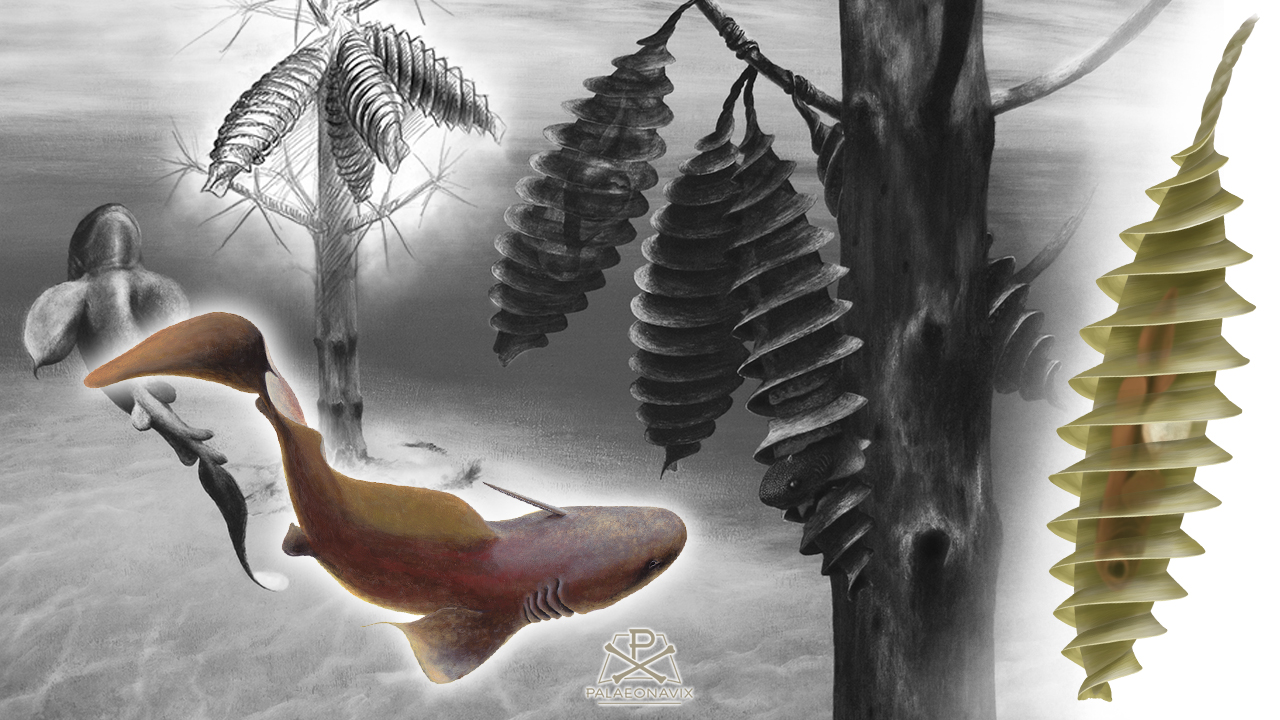Fossil of the Year 2025: Fayolia, where the little sharks came from
mixed techniques, artwork by Freddi Spindler

A milestone in my work as an illustrator and thus for PALAEONAVIX goes back to my university years. Dr. Jan Fischer was working on Palaeozoic cartilaginous fishes, their migratory movements and nurseries, and thus on a lot of spirally twisted eggs of stem-group sharks. Our teacher, Professor Jörg W. Schneider, had brought a number of vertebrate and other topics into the working group at that time, all half self-taught, but he was the guiding mentor, sharing discoveries, questioning everything, providing impulses and always willing to contribute with illustrations. And for some years, Dr. Sebastian Voigt was in Freiberg, doing more than just ichnology. His studies in Madygen, Kyrgyzstan, once again led to the shark eggs, pretty damn small ones, from the Triassic.
When I looked through old sketches and project notes, even after getting rid of a lot of nonsense, there remained a bigger pile of sketches and preliminary drawings than from any other project ever. There were times when I couldn't see any more egg capsules. There's a lot of construction behind it.
Most of them are from xenacanthid or hybodontid sharks, neither of which were sharks in the narrower sense, but rather cartilaginous fish that evolutionarily preceded the crown group of modern sharks and rays. In this respect, not every feature of today's relatives can be taken for granted. Nevertheless, this screw-shaped egg type can still be found in some modern species. And the principle of a protein envelope around the embryo is the same in all modern cartilaginous fish anyway - that is, in just less than half of them that do not give birth to live young anyway.
During motorway construction near Chemnitz in Saxony, Germany, very old egg capsules from the Carboniferous period were discovered, some 330 million years old. The Fayolia type belongs to xenacanthid sharks. At that time, these spine-bearing cartilaginous fish were also widespread almost everywhere in rivers and lakes. A particularly beautiful specimen with rarely preserved features was chosen to be the ‘Fossil of the Year 2025’ by the Paläontologische Gesellschaft. It will be on display at the Museum of Natural History Chemnitz starting on the evening of March 14th. Its examination is far from finished.
So it's a bit like returning to an old theme. There is a lot that connects me to the museum in Chemnitz anyway. The director Prof. Ronny Rößler, a leading palaeo-botanist, and his deputy Dr. Ilja Kogan have also encouraged me to realise many a picture. I say thank you and I am happy to be among friends.

